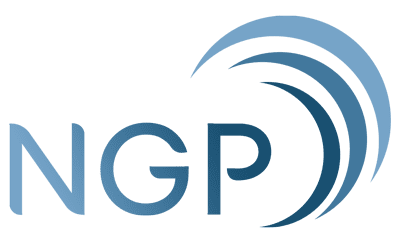Software as a Service (SaaS) businesses face unique challenges and opportunities in optimizing their online presence in the rapidly evolving digital landscape. SEO, or Search Engine Optimization, plays a pivotal role in ensuring that these businesses stand out in a crowded market.
This comprehensive guide delves into the essential SEO metrics that SaaS companies should monitor to drive traffic, enhance user engagement, and, ultimately, convert leads into loyal customers.
Importance of SEO for SaaS Businesses
SEO for SaaS is not just about getting to the top of search engine results pages (SERPs); it’s about establishing authority, building trust, and delivering value to your target audience. A robust SEO strategy can be the difference between growth and stagnation in a sector where the product is intangible and the competition fierce.
Overview of Key SEO Metrics for SaaS
Tracking the right metrics is crucial for understanding the effectiveness of your SEO efforts and making data-driven decisions. Let’s explore the key metrics that can help SaaS businesses thrive in the digital ecosystem.
Understanding Organic Traffic
What is Organic Traffic?
Organic traffic refers to visitors who land on your website as a result of unpaid search results. It is a critical indicator of SEO success, reflecting the health and visibility of your SaaS platform.
Tools for Tracking Organic Traffic
The following stand out as powerful tools for monitoring organic traffic.
- Google Analytics
- SEMrush
- Ahrefs
- Moz
By setting up proper tracking, businesses can gain insights into visitor behavior and traffic sources.
Interpreting Organic Traffic Data for SaaS
Analyzing organic traffic trends can help identify what works and what doesn’t in your SEO strategy. A steady increase in organic traffic suggests that your content resonates with your audience and search engines.
Importance of Keyword Rankings in SaaS SEO
The Role of Keywords
Keywords are the foundation of SEO. They connect your content with your target audience’s search queries, making it crucial to rank well for relevant keywords.
Tools for Monitoring Keyword Rankings
SEMrush and Ahrefs are among the top tools for tracking keyword rankings. These platforms provide insights into keyword performance, competition, and opportunities for optimization.
Strategies for Improving Keyword Rankings
Consistently producing high-quality, relevant content and optimizing on-page elements are key strategies for improving keyword rankings. Understanding user intent and aligning your content accordingly can significantly boost your SEO efforts.
Related: The 5 Best Content Planning Practices for Digital Marketing
Defining Conversion Rate in the SaaS Context
What is Conversion Rate?
Conversion rate measures the percentage of visitors who take a desired action on your website, such as signing up for a trial or making a purchase. It’s a direct indicator of your website’s effectiveness in turning visitors into customers.
Importance of Conversion Rate Optimization (CRO) for SaaS Businesses
For SaaS companies, optimizing the conversion rate is essential for maximizing the ROI of SEO and other marketing efforts. It directly impacts revenue and growth.
Tools and Techniques for Measuring and Improving Conversion Rates
Utilizing tools like Google Analytics and Hotjar can provide valuable insights into user behavior and conversion funnel performance.
A/B testing different elements of your website can also lead to significant improvements in conversion rates.
Below are some good examples of these tools and techniques:
Tools:
- Google Analytics
- Hotjar
- Optimizely
- VWO
- Crazy Egg
Techniques:
- A/B testing: Compares two versions of a webpage element to see which drives more conversions.
- Multivariate testing: Tests multiple variations of different webpage elements simultaneously.
- Heatmap and user session recording: Visually represent user behavior to identify areas for improvement.
- Conversion funnel analysis: Analyze the steps users take towards conversion and identify drop-off points.
- Form optimization: Improves form design to increase completion rates.
The combination of powerful analytics tools and data-driven optimization techniques allows businesses to gain deep insights into user behavior, identify friction points, and systematically improve conversion rates across their digital properties.
Understanding Bounce Rate and Its Implications
What is Bounce Rate?
Bounce rate is the percentage of visitors who leave your website after viewing only one page. A high bounce rate may indicate your site’s content or user experience is not meeting visitors’ expectations.
Tools for Analyzing Bounce Rate and User Engagement
Google Analytics, Mixpanel, Amplitude, and Heap offer comprehensive data on bounce rate and user engagement metrics. Analyzing this data can help identify areas for improvement in content relevance and website usability.
Strategies to Reduce Bounce Rate and Increase User Engagement
Improving website speed, enhancing the quality of content, and ensuring mobile optimization are effective strategies for reducing bounce rates. Additionally, clear calls-to-action (CTAs) and a user-friendly site structure can encourage deeper engagement.
Role of Backlinks in SaaS SEO
The Importance of Backlinks
Backlinks, or inbound links from other websites, are a critical factor in SEO. They signal to search engines that other sites consider your content valuable and authoritative.
Tools for Backlink Analysis
Ahrefs and Majestic offer detailed backlink analysis, helping you understand your site’s backlink profile and identify opportunities for improvement.
Building a Healthy Backlink Profile
Focusing on earning high-quality backlinks from reputable sites within your industry can significantly enhance your SEO performance. Guest blogging, creating shareable content, and engaging in digital PR are effective strategies for building a robust backlink profile.
Impact of Page Speed on SEO and User Experience
Why Page Speed Matters
Page speed is a crucial factor in both SEO and user experience. Slow-loading pages can lead to higher bounce rates and lower rankings in search results.
Tools for Measuring Page Speed and Site Performance
Below is a list of tools that provide actionable recommendations for improving page speed. Implementing these suggestions can lead to better user engagement and SEO outcomes.
- Google PageSpeed Insights
- GTmetrix
- Pingdom Website Speed Test
- WebPageTest
- LightHouse (by Google)
Tips for Improving Page Speed and Overall Site Performance
Optimizing images, leveraging browser caching, and minimizing code are practical steps to enhance page speed. Additionally, choosing a reliable hosting provider can significantly impact site performance.
Importance of Mobile Optimization for SaaS Sites
The Need for Mobile-Friendly Websites
With the increasing prevalence of mobile devices, having a mobile-optimized website is no longer optional. It’s essential for reaching a wider audience and improving SEO.
Tools for Testing Mobile Friendliness
Google’s Mobile-Friendly Test tool allows you to check how easily a visitor can use your page on a mobile device. Aside from these, you may want to consider the following:
- Mobile-Friendly Test by SEMrush
- Responsinator
- Mobile-Friendly Test by BrowserStack
- Mobi Ready
- PageSpeed Insights (also by Google)
Ensuring mobile optimization can lead to better engagement and higher search rankings.
Strategies for Achieving Mobile Optimization
Responsive design, fast loading times, and easy navigation are key elements of mobile optimization. Prioritizing the mobile user experience can significantly enhance your SEO performance and user satisfaction.
Role of Content in SaaS SEO Strategy
The Importance of High-Quality, Relevant Content
Content is at the heart of SEO. Creating valuable, informative, and engaging content can attract and retain your target audience, driving organic traffic and conversions.
Tools for Assessing Content Quality and Relevance
Tools like Yoast SEO and Grammarly can help ensure your content is optimized for search engines and free from grammatical errors. Additionally, conducting content audits can identify opportunities for improvement.
Guidelines for Creating High-Quality, Relevant Content
Understanding your audience’s needs and preferences is crucial for creating resonant content. Incorporating keywords naturally, using compelling headlines, and providing actionable insights can make your content more effective and shareable.
Understanding the Importance of Local SEO for SaaS
What is Local SEO?
Local SEO focuses on optimizing your online presence to attract more business from relevant local searches. While not applicable to all SaaS businesses, those with a physical presence or a specific geographic target market can benefit significantly.
Tools and Techniques for Improving Local SEO Presence
Google My Business is critical for managing your online presence across Google, including search and maps. Optimizing your listing, encouraging reviews, and ensuring NAP (Name, Address, Phone number) consistency across the web can enhance your local SEO efforts.
Strategies for Local SEO Success
Creating local content, building local backlinks, and engaging with your community can improve your visibility in local search results. Additionally, leveraging local keywords and optimizing for “near me” searches can attract more local traffic.
Influence of Social Signals on SEO
The Impact of Social Engagement
While social signals are not a direct ranking factor, they can indirectly affect SEO. High levels of social engagement can increase brand visibility, drive traffic, and enhance content reach.
Tools for Tracking Social Engagement and Its SEO Impact
Social media analytics tools, such as Sprout Social and Hootsuite, can provide insights into social engagement metrics. Monitoring these metrics can help gauge the effectiveness of your social media strategy in supporting SEO goals.
Strategies for Enhancing Social Signals
Creating shareable content, engaging with your audience on social platforms, and leveraging social media influencers can amplify your social signals. Consistently delivering value through your social content can increase brand awareness and website traffic.
Recap of Essential SaaS SEO Metrics to Track
As we conclude, it’s clear that tracking the right SEO metrics is crucial for SaaS businesses aiming to improve their online visibility and drive growth. From organic traffic and keyword rankings to conversion rates and social signals, each metric offers valuable insights into the effectiveness of your SEO strategy.
The Continuous Nature of SEO Monitoring and Optimization
SEO is not a set-it-and-forget-it endeavor. It requires ongoing monitoring, analysis, and adjustment to stay ahead of the competition and adapt to changing algorithms and market trends. SaaS businesses can achieve sustained success in the digital landscape by staying committed to tracking and optimizing these key metrics.
Encouragement to Adapt and Evolve SEO Strategies Based on Metrics
In the dynamic world of SEO, what worked yesterday may not work tomorrow. Therefore, it’s essential to remain flexible and open to evolving your strategies based on the data and insights gleaned from these critical metrics. Embrace change, experiment with new tactics, and continuously strive to improve your SEO performance for long-term success.
Wrapping Up
Monitoring key SEO metrics is crucial for SaaS businesses to unlock their online potential and drive sustainable growth. By staying flexible and adapting strategies based on data-driven insights, SaaS companies can outpace competitors and cement their place as industry leaders. Embracing a data-driven marketing culture is the path to long-term SEO success for SaaS organizations.
If you’re looking for help with SEO and other digital marketing services, you can count on NGP-IMC, one of the best PR agencies in the Philippines today.
Harmony Adiao-Carrillo is the editorial lead of NGP-IMC.


